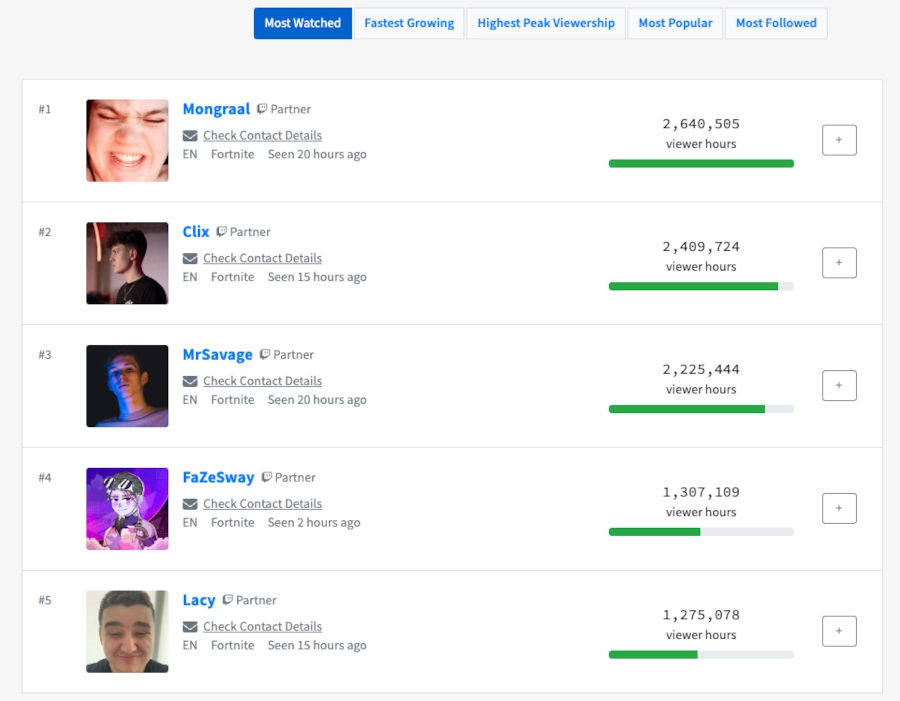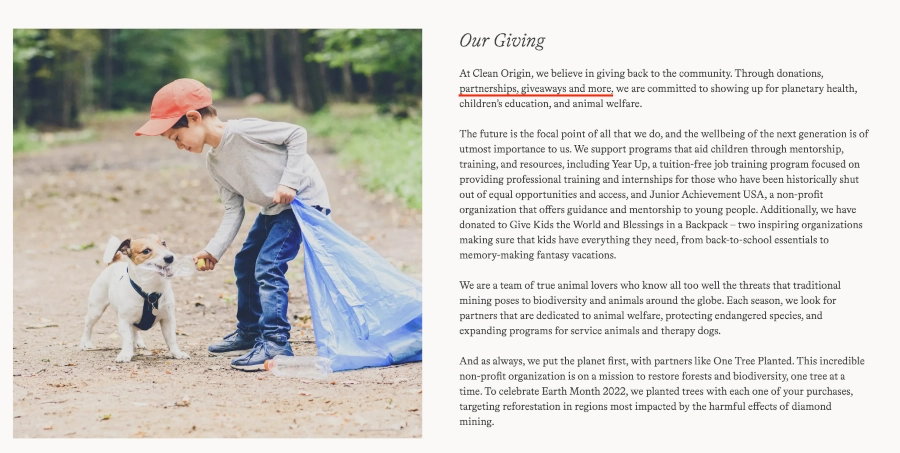Influencer marketing has emerged as a popular choice for brands to connect with their target audiences and enhance brand awareness.
This strategy enables brands to promote their products or services authentically and cost-effectively. It fosters brand visibility and cultivates a sense of community and shared experiences that resonate with consumers.
However, if not executed strategically, influencer marketing campaigns can backfire, potentially damaging your brand’s reputation.
In this article, we’ll dive into common influencer marketing challenges that can jeopardize your brand’s standing and provide actionable insights to help you navigate this dynamic marketing landscape effectively.
Let’s get started.
Consumers are increasingly discerning and appreciate the authenticity of the brands they support.
Therefore, when partnerships with content creators appear inauthentic or forced, it can damage your brand’s reputation and alienate potential customers.
But fear not. We’ve listed some common influencer marketing challenges below and how to avoid them.

Influencer marketing campaigns require substantial time and financial investment.
A significant outlay is involved, from identifying and selecting influencers to crafting campaign content and tracking results.
When the target audience isn’t aligned, this investment becomes largely ineffective. Considering the cost of Instagram ads and today’s influencer rates, you’ll unfoundedly want to choose the best influencers to work with from the start.
Moreover, a misaligned target audience can lead to embarrassing situations for both your brand and the influencer.
If an influencer promotes products or services that are inappropriate or unappealing to their followers, it can trigger negative feedback and damage their reputation.
Similarly, you may face criticism for partnering with an influencer whose audience isn’t a good fit for your product or service.
Precisely define the influencer’s target audience to ensure your campaign resonates with the right people, maximizing its impact.
Steps to identify and understand the influencer’s target audience:

For example, if any gaming brand has to promote itself, it must partner with the right influencers.
Yuplay, a prominent gaming brand, could partner with top Fortnite streams on Twitch to promote the “Fortnite Batman Who Laughs” outfit.

These gaming influencers’ expertise, large following, and viewer hours could help YUPLAY reach a wider audience and generate excitement for the new outfit.
Choosing the right influencer can amplify your brand message, connect you to a wider audience, and drive positive results.
But for brands, particularly those in niche markets like the RV industry, selecting the right content creator can be challenging. While the allure of influencer marketing is undeniable, misfires can cast a long shadow of negative publicity.
For instance, Cruise America, aiming to attract buyers for new and used RVs, could suffer brand damage from a poorly executed influencer campaign. Brands must carefully consider influencer selection to reap the benefits of influencer marketing without risking brand reputation.
Partnering with channels like “Keep Your Daydream” and “RV Love,” with their authentic content and firsthand experiences, resonates well with audiences, making them prime choices for RV-related campaigns.
Remember, a misaligned collaboration can prove detrimental. Thus, understanding different types of influencers and their respective strengths and limitations is important to navigating this landscape effectively.
Note: Each influencer level has strengths and limitations: Nano and micro influencers excel at niche marketing and deep audience engagement. Mid-range influencers balance reach and engagement, while macro and large influencers create widespread buzz and brand awareness.
Partnering with influencers can be an effective marketing strategy, but it’s crucial to carefully research them.
Thorough influencer research ensures that your chosen partners align with your brand values, target audience, and overall marketing goals.
Key factors to consider include:
Vetting influencers is essential to protect your brand’s reputation and ensure your influencer marketing efforts align with your brand strategy.
For example, partnering with the right social media influencers is crucial for brands like Hims, which market sensitive products like tadalafil.
They conduct thorough research to ensure that the influencer aligns with the brand’s values, has a relevant audience, complies with regulations, and maintains a positive reputation.
As the icing on the cake, they know the perfect mega influencers onboard, like Alex Rodriguez.
Exciting to see huge wins for Hims & Hers! They’re making an impact in mental health, hair regrowth, and broader men’s health. Over 1M+ users — with no signs of slowing down on their path to $1B+ of revenue. Great team and great progress. #HIMSInvestor https://t.co/kb1rjEGxHf
— Alex Rodriguez (@AROD) May 15, 2023
Partnering with controversial content creators can be a double-edged sword for influencer marketing campaigns.
While it can generate buzz, attract attention, and spark conversations, it also risks damaging your brand’s reputation and alienating potential customers.
Before embarking on such a partnership, weighing the potential benefits against the risks is crucial to ensure that the creator’s values and mission align with your brand’s identity.
A mismatch could lead to a backlash from consumers who perceive your brand as endorsing controversial views or behaviors.
Partner with social media influencers who share your vision and vision. A shared vision between your brand and influencer fosters a genuine and trustworthy perception among the audience.
Consider the case of StudioSuits, a brand renowned for its exquisite wedding suits for men, who exemplify this concept by collaborating with photographers who share their passion for capturing the essence of a wedding day.
These influencers showcase groomsmen impeccably dressed in StudioSuits’ attire, reinforcing the brand’s commitment to weddings and the joy they bring.
This harmonious relationship between brand and influencer ensures a genuine portrayal, which is crucial for building trust and solidifying reputation in influencer marketing.
Another excellent example is brands like Clean Origin, which prioritize using lab-grown diamonds in their jewelry.
The brand collaborates with creators who share the same values. This alignment ensures consistent and authentic storytelling, amplifies the brand’s message, and reinforces trust and transparency.

Creators can communicate the brand’s mission, educate consumers about lab-grown diamonds, and reach a wider audience. Clean Origin strengthens its commitment to sustainable and ethical jewelry by partnering with like-minded creators.
Establishing clear goals is crucial for any marketing campaign, including influencer marketing.
Without defined objectives, you risk squandering resources on campaigns that lack direction and purpose. This can result in ineffective influencer partnerships, misleading content creation, and a poor return on investment (ROI).
Without specific targets to track, you’ll be unable to assess your campaign’s effectiveness and make informed decisions about future partnerships.
Most importantly, you and your influencers will operate in the dark without goals. This lack of clarity can lead to misunderstandings, misaligned expectations, and disappointing campaign outcomes.
Establish clear goals and maintain transparency with your partners.
Set SMART goals to guide your influencer marketing campaign:
The benefits of setting clear goals include:
In influencer marketing, prioritizing engagement over content quality can be a crucial mistake that can render campaigns ineffective and damage your brand’s reputation.
Quality content is paramount for branding. It’s not about elaborate productions. It’s about connecting with your audience through valuable messaging.
That’s why creating branded videos and collaborating with suitable influencers is essential. A familiar face speaking directly to your target audience in an authentic video fosters positive engagement and showcases your brand in a genuine manner.
On the other hand, poor-quality content, even when generating high engagement rates, can still be perceived as superficial, misleading, or even detrimental to the brand’s image.
Define clear objectives to guide your campaign strategy. This allows you to track progress, make data-driven decisions, and optimize campaigns for maximum impact.
Use various tracking methods to assess campaign performance accurately. Assign unique hashtags to each campaign to measure engagement and reach.
Employ media monitoring tools like Brand24, Meltwater, or Sprout Social to gather real-time mentions, sentiment analysis, and campaign performance insights.
You can provide influencers with personalized tracking links or discount codes to measure website traffic and conversions attributable to their efforts directly.
While monitoring is crucial, avoid micromanaging influencers. Respect their expertise and creative vision, allowing them to connect with their audience authentically.
Do you foster a long-term relationship with your content creator, or is working with them a one-time deal? While fostering relationships can take time and care, severing ties with your content creators post-campaign is a common yet costly error. It strains relationships, hindering future collaborations.
Not to mention, identifying suitable new influencers becomes a new challenge.
Think of influencers as valuable partners. Their reach extends to your target audience, aiding in achieving marketing goals. Nurturing strong influencer relationships is crucial for long-term influencer marketing success.
Nurture relationships with influencers beyond the campaign.
Regular communication keeps your brand top of mind and fosters a sense of appreciation among influencers. This ongoing engagement opens doors for future collaborations, leveraging the influencer’s reach and boosting your credibility.
Additionally, regular communication provides:
Engaging with your followers can feel like a full-time job. However, failing to engage with followers is a significant misstep in influencer marketing.
Influencer partnerships extend beyond simply broadcasting a message to a large audience. They involve cultivating relationships and establishing genuine connections with potential customers.
Neglecting to interact with followers who engage with an influencer’s content means overlooking potential customers who have already shown interest in your product or service.
Responding to comments, addressing concerns, and answering questions can transform these intrigued individuals into paying customers.
Engage with your followers to gain valuable insights and build brand loyalty.
In influencer marketing, cultivating a devoted and engaged following is the bedrock of achievement. Social media platforms like Instagram flourish on genuine connections, making proactive interaction with your audience an indispensable element of your strategy.
Reacting to comments, messages, and mentions and incorporating interactive elements like polls and Q&A sessions are the keys to unlocking vibrant engagement.
This practice entices your followers to participate actively in your content and motivates them to share your account with their networks, organically expanding your Instagram presence.
By fostering this two-way relationship, you can earn free Instagram followers through word-of-mouth recommendations while cultivating brand loyalty.
Measuring the effectiveness of influencer marketing campaigns is crucial for making informed decisions about future campaigns. Measuring results depends on choosing the correct KPIs and tracking the results and performance of your influencer partnerships. Avoid the common mistake of neglecting analytics and measurement strategies, or getting overwhelmed by the need to track several content creators at once.
For example, UTM parameters are an effective method for tracking website visitors and engagement. These dynamic tags can be added to URLs to track campaign traffic and user behavior.

Without UTM parameters in your campaign links, you lose out on valuable insights like:
Before launching an influencer marketing campaign, define clear goals and KPIs that align with your overall marketing objectives. Otherwise, you’re throwing darts into the wind. These goals might include:
By establishing clear metrics upfront, you can accurately measure the success of your campaign and determine whether it aligns with your expectations.
To assess the success of influencer marketing campaigns, define clear metrics such as:
The most important metrics depend on your specific goals. For brand awareness campaigns, focus on metrics like impressions and sentiment analysis. For lead generation campaigns, prioritize leads and conversion rates.
Thankfully, marketing analytics software can help you track these metrics effectively (with no heavy lifting required). The best part? You get comprehensive analysis and insights into your influencer marketing campaigns.
As the digital landscape evolves, influencer marketing becomes crucial for brands to connect with their target audience and achieve marketing goals.
Partnering with influencers allows you to amplify brand messages, drive customer engagement, and boost sales.
There’s no slowing down for the influencer marketing industry in sight. So, it’s time to take control of your influencer marketing campaigns and avoid falling behind.
GRIN, a leading influencer marketing platform, provides you with the tools and expertise needed to execute successful influencer campaigns.
With GRIN, you can quickly identify and connect with relevant influencers, track campaign performance, and measure ROI.
Harness the power of influencer marketing and elevate your brand with GRIN — your partner in successful influencer marketing strategies. Book a free demo now!
Our team keeps a finger on the pulse, so you’re always working with the latest information.